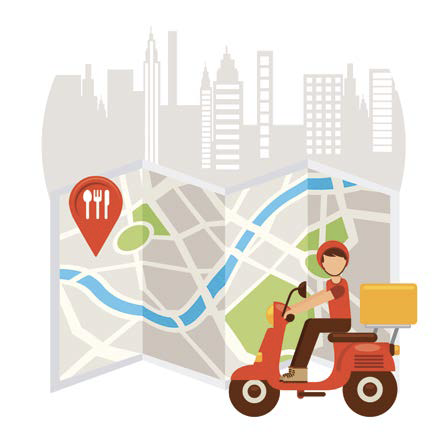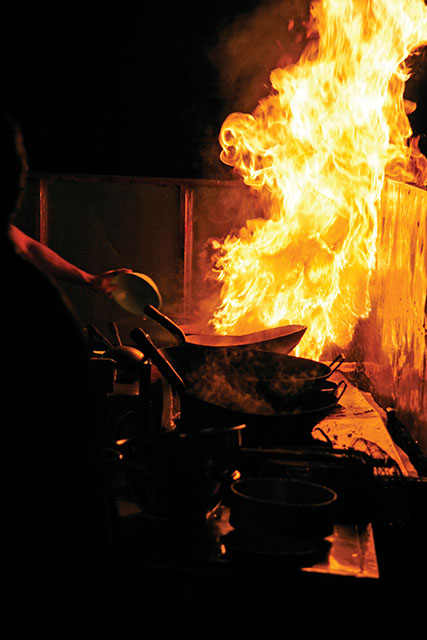
In a place where heat and flame pretty much rule the game, kitchens are undeniably at high risk for fires. Coupled by the fact that it only takes a one spark or small gas leak to set the building ablaze, it is crucial to have preventive methods and a Standard Operation Procedure (S.O.P) to handle the situation, should the unfortunate happen. For restaurant operators, it is important to know what are potential causes of fire in the back-of-house:
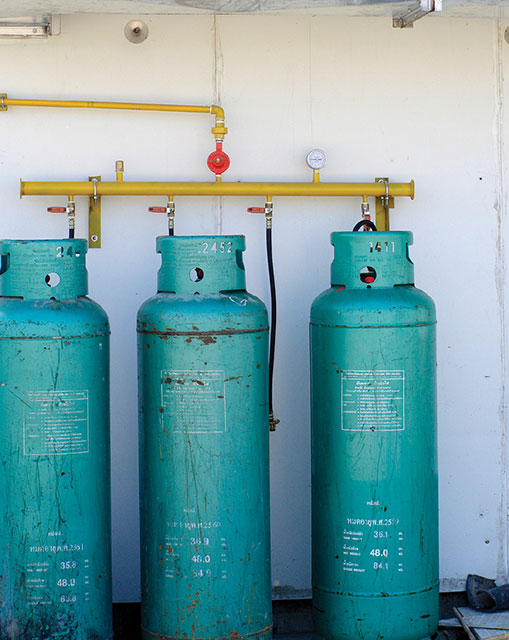
Schedule regular checks on the gas line
• Lack of control of ignition sources like smoking, welding or burning.
• Equipment being operated at ‘overload’.
• Lack of smoke / fire detection systems.
• Low standards of housekeeping (cleaning, servicing, repairing) including collection and disposal of flammable materials. Fire can spread quickly in dirty walkways and storage areas.
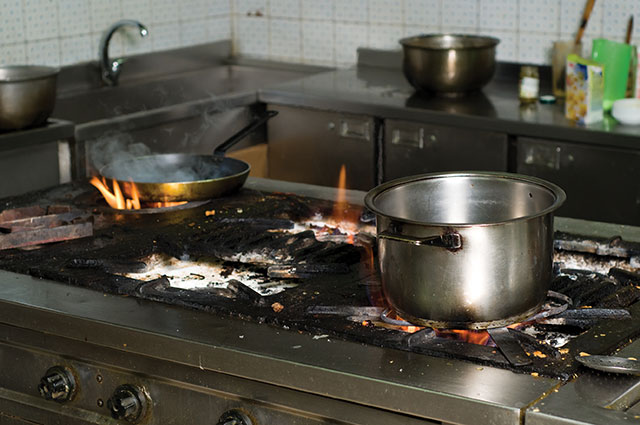
A dirty stovetop could spark a fire as well
• Inconsistent inspection and maintenance of fuel lines.
• A full grease trap may hold pieces of food or in some cases, stray paper products inside which can ignite a fire when more hot grease is added.
• Improper storage of flammable materials.
• Inadequate ventilation facilities leading to accumulation of fine dust particles that exceed the lower explosive limit (LEL).
• A missing regulator cap, improper storage of pressurised gas cylinders (unventilated places and rolling cylinders instead of using a cart) can be fire-starting factors.
![]()
HANDLING A FIERY SITUATION
Unfortunately, such incidents are highly possible and everyone in the establishment ought to be trained on managing a fire. There are three main methods to douse a fire namely starving (removal of fuel), smothering (removal of oxygen) and cooling (removal of heat) which can be illustrated by a ‘fire triangle’.
Fuel burns, heat sets the fuel alight and oxygen keeps fire burning. By eliminating one element puts the fire out; depending on the situation which it was caused.
• When using a foam extinguisher, close all windows and doors to limit the amount of air getting to the fire as foams ‘blanket’ and removes air from contacting the fuel.
• In the event of fats or oil igniting in a pan, quickly cover the pan with a lid or fire blanket to cut off the air and turn off the gas / electricity switch thereby removing heat from the triangle. Baking soda helps for small skillet fires. Do not use water in this situation as it will cause the ignited fat to spread which increases the heat.
• To extinguish the flame of a burning fabric, wrap a fire blanket around the person and place them on the floor to remove the air element.
• If paper or wood material becomes alight, use a water extinguisher to take the heat out of the triangle.
• Should an electrical appliance catch fire, do not reach for water to put it out as it will further encourage the flames.
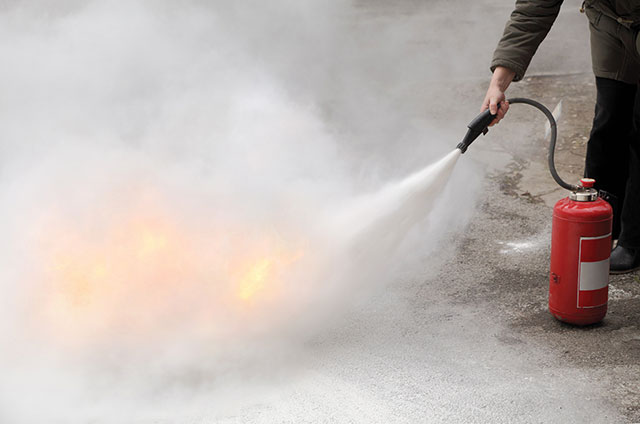
KNOW THE DIFFERENT FIRE EXTINGUISHERS
It is compulsory for food-related establishments to have portable fire extinguishers which come in different variants for specific purposes. A unit typically consists of a handheld cylindrical pressure vessel to discharge the agent to put out the fire. The different agents in the extinguishers are differentiated by colours and they need to be serviced regularly. Do note that classification for this device varys with standards of United Kingdom, Australia, United States to be most universally accepted.
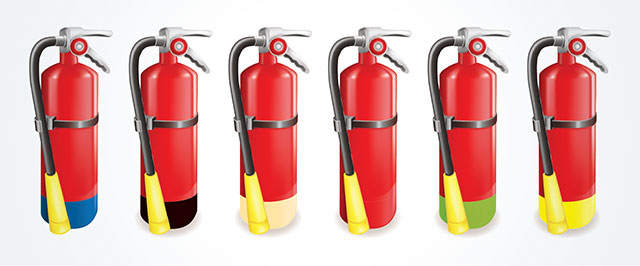
Types of fire extinguisher
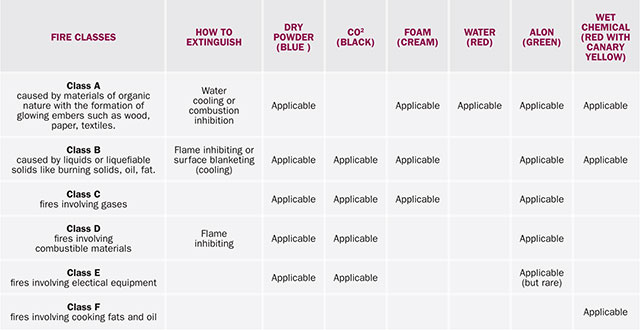
** Based on United Kingdom classifications
It is often said that prevention is better than cure and it applies in minimising the risks of fires occuring in a restaurant. All staff must be trained in preventive methods and procedures to follow in an event of fire. To ensure everyone remains sharp in this area, having intermittent fire drills is a recommended exercise.
Kinton, R., Ceserani, V. The Theory of Catering (1989)
Rahm, J. Restaurant Fire Hazards – http://www.foodservicewarehouse.com/education/product-safety-public-health/restaurant-fire-hazards-c28185.aspx#sthash.pSvFKVND.dpuf
ESMS Implementation Handbook








